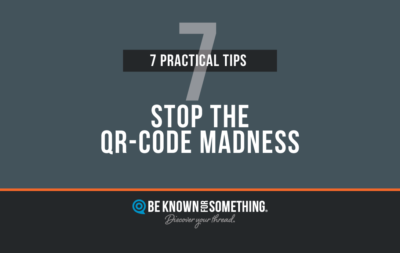What is your favorite website? What site do you go to over and over again? It’s probably not your church website. Even if you designed and developed it!
And the sobering truth is; your congregation will never say your church website is their favorite place to go online either. It’ll never happen.
So should we just give up on creating a good church website then? No! In fact, on the contrary, let’s take a look at America’s favorite websites and learn from them.
According to the latest (at time of writing) traffic rankings, here are the top 5 websites (and their estimated unique visitors/month):
- Google.com
- Facebook.com
- Amazon.com
- YouTube.com
- Yahoo.com
Anything surprising? Wikipedia, eBay, Twitter, Reddit, and Netflix, finish off the top 10 most popular sites.
What can we learn from this list? Can your church (which probably ranks outside of the top 100,000 websites) possibly take away from those that cost a gazillion dollars compared to yours? Plenty. Open the top 5 (I added links above) and see what I’m talking about.
Here’s 3 simple things:
- Learn what web paradigm is and stick to it. Paradigm is what “most” popular website designs follow. It’s that comfortable feeling that occurs when you get to a website for the first time and you instantly know where things are and how to navigate. ***You need to follow these essentials in order to have your website feel natural to everyone:
– Headers are a simple space at the top. It’s getting shorter and compressed with a small logo in the top left (usually). There’s a site-wide search area contained inside.
– A Menu is found just under the header or down the left side. Occasionally there’s a “secondary menu” in the header (upper right near the search area). The menu is simple, self explanatory and organized.
– There’s a simple main content delivery area. Near the center of the page slightly to the left. Why? People tend to spend more time on the left side of a web page.
– The footer is a small space at the bottom. It usually contains the menu again, a privacy policy (if you collect data from forms, etc), and a site map that can help SEO. - People want something from your site. Make sure you deliver it simply. These website clearly demonstrate great content and anticipate how people are searching and looking for that content. Their menus deliver what people are looking for and no more. Design never gets in the way of content. ***Watch your page views to identify what people are looking for and stop pushing content that no one is interested in.
- Get responsive. Have a tablet or smartphone? I dare say you’ve been to these sites on your mobile device. Because of the small screen size, every website needs to look a bit different when “interpreted” in a small space. Responsive websites do the translation seamlessly. ***You need one. About 50% of time spent online is on a mobile device. And it’s growing quickly!
You’ll never produce your community’s favorite site. But let’s learn and follow in the steps of the popular ones. Your congregation will be extremely happy you did!




